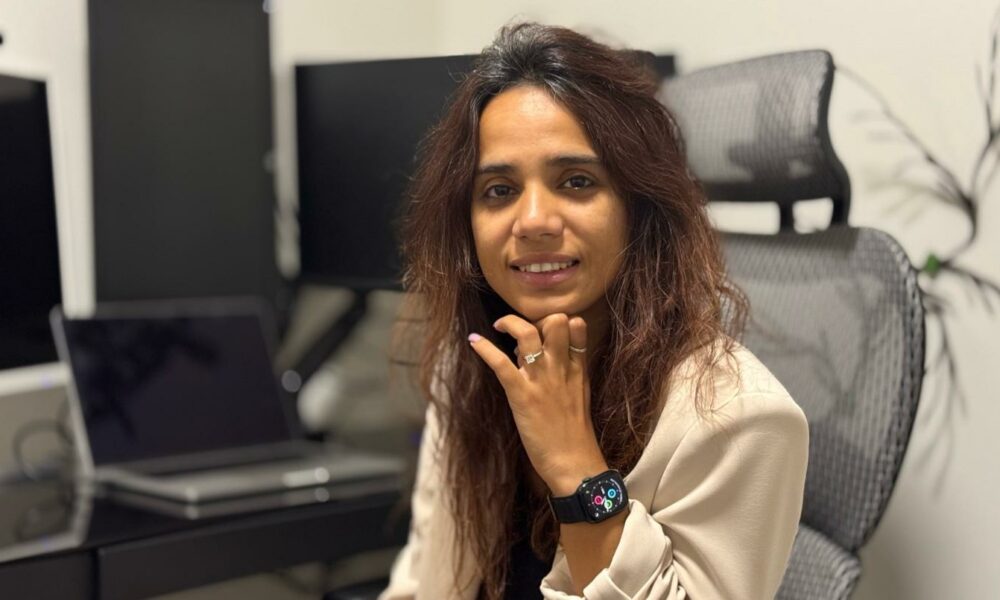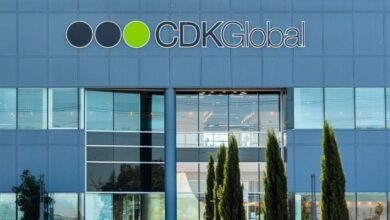Pallavi Duggal: Leading the Way in Technical Excellence and Software Innovation

With a dynamic career trajectory, Pallavi Duggal has ascended from an MTS role to SMTS and swiftly to LMTS, exemplifying her rapid growth and proficiency in software engineering. Armed with a Master’s degree, she boasts over 8 years of hands-on experience in software development, honing her craft to perfection.
Presently, she holds the reins as a Software Engineer Manager, adept at steering teams toward delivering top-tier solutions. Her track record speaks volumes, showcasing her ability to navigate projects to triumphant conclusions while ensuring impeccable functionality and performance. Fueled by an insatiable appetite for problem-solving, Pallavi is driven by a steadfast commitment to excellence in software development.
Choosing the right tech stack
Pallavi has a meticulous process in choosing the right technology stack for a project, involving a thorough evaluation of several critical factors. “Firstly, I deeply analyze the project’s specific requirements, encompassing functionality, performance expectations, scalability demands, and security prerequisites,” she explains. This detailed analysis ensures that the chosen technology stack aligns perfectly with the project’s needs. Leveraging the development team’s proficiency with various technologies is also crucial. “This strategic approach not only accelerates development but also enhances the quality of deliverables by leveraging the team’s expertise effectively,” Pallavi notes.
Scalability and performance are paramount considerations in her decision-making process. For projects demanding high scalability and real-time processing capabilities, she often favors technologies like Node.js within a microservices architecture. Integration and compatibility with existing systems and third-party services are also key factors. “I prioritize technologies renowned for compatibility and robust API capabilities, vital for projects necessitating extensive integration,” she emphasizes. Long-term sustainability is another critical aspect, as Pallavi assesses the enduring relevance and ongoing development of chosen technologies, favoring widely adopted solutions that promise sustained maintenance and future-proofing. By meticulously evaluating these facets, Pallavi ensures the selection of a technology stack that not only meets immediate project requirements but also fortifies long-term success and adaptability.
Boosting database performance
In a recent project, Pallavi led a comprehensive database optimization initiative that significantly boosted system efficiency. “One pivotal aspect of this endeavor involved implementing partitioning for critical tables,” she explains, which streamlined data management and enhanced query performance by distributing data across multiple storage resources. This strategic move addressed scalability challenges, enabling the system to handle increased loads seamlessly.
Pallavi’s meticulous monitoring of database storage utilization ensured optimal performance and resource allocation. She utilized advanced monitoring tools like Splunk, SQL DMVs, and ETW to proactively identify and resolve performance bottlenecks, thereby enhancing overall system throughput and responsiveness. “One standout achievement was optimizing the Contact Pause functionality by consolidating and optimizing blob operations,” she notes. This optimization reduced overhead and markedly improved database performance across all system stacks. Throughout these efforts, Pallavi collaborates cross-functionally to tackle performance issues, showcasing her ability to enhance system efficiency through targeted and innovative solutions.
Balancing user needs and feasibility
Balancing technical feasibility with user requirements is a critical aspect of developing impactful customer-facing features for Pallavi. “I start by conducting thorough user research to understand their needs and preferences,” she explains. This initial step is essential for informing the design and functionality of the feature. At the same time, Pallavi assesses the technical feasibility by considering factors such as existing infrastructure, development resources, and timelines.
Throughout the development process, clear communication and collaboration with stakeholders are key to ensuring alignment between user expectations and technical capabilities. “Iterative testing and feedback loops further refine the feature,” Pallavi notes, ensuring that it meets both user needs and technical standards. This method ensures that the final product not only delights users but also integrates seamlessly within the technical ecosystem. By maintaining this balance, Pallavi successfully delivers solutions that are both user-friendly and technically robust.
Overcoming scalability challenges
Pallavi’s work on Journey Builder, a pivotal SaaS product within Marketing Cloud, exemplifies her ability to tackle the challenge of scalability. “I engineered and implemented sophisticated, scalable engines that significantly bolstered our system’s ability to handle escalating workloads with efficiency and reliability,” she explains. One key innovation was the introduction of multiple services featuring robust queueing and batching mechanisms, which resulted in a remarkable 200% increase in throughput. This enhancement allowed the platform to seamlessly manage higher transaction volumes and deliver superior performance under load.
To further elevate capabilities, Pallavi led initiatives aimed at enhancing reliability, performance, and scalability. Utilizing advanced monitoring tools such as Splunk, she gained deep insights into system performance metrics, enabling proactive identification of bottlenecks and targeted optimizations. “Among our notable achievements was the implementation of Adaptive Throttling, a pioneering solution developed under my leadership,” she notes. This dynamic throttling mechanism exponentially scaled the system, efficiently meeting burgeoning demands. These initiatives highlight Pallavi’s commitment to pushing the boundaries of scalability, ensuring that products consistently meet the dynamic needs of users and business objectives while positioning the platform for sustained growth and performance excellence.
Ensuring system reliability
Ensuring the reliability of critical services is foundational for maintaining customer trust, and Pallavi has implemented several high-standard strategies to achieve this. “One key initiative was the deployment of advanced monitoring and metrics frameworks using Splunk and Grafana,” she explains. This initiative empowered her team to meticulously monitor system performance, promptly detect anomalies, and maintain critical services at 99.99% availability, with some achieving up to 7 9’s reliability.
A standout achievement in enhancing system reliability was the introduction of Adaptive Throttling. “This dynamic mechanism optimizes system throughput in real-time to efficiently manage fluctuating workloads,” Pallavi notes. This innovation not only bolstered scalability but also significantly enhanced overall system reliability. The results were tangible and impactful, notably reducing customer attrition from approximately 33% to less than 8%. These efforts underscore Pallavi’s unwavering commitment to delivering resilient and dependable services that consistently exceed customer expectations.
Staying current with tech trends
Staying current in a diverse and rapidly evolving field like technology is crucial. “I actively pursue knowledge through ongoing professional development opportunities such as attending industry conferences, participating in webinars, and engaging with specialized forums like GitHub and Stack Overflow,” Pallavi explains. This commitment to continuous learning ensures that she remains at the forefront of technological advancements.
In addition to formal learning, Pallavi regularly explores new frameworks and tools through hands-on experimentation and structured online courses. “This proactive approach not only broadens my skill set but also ensures that I can effectively leverage the latest advancements to deliver impactful solutions in my projects,” she notes. By embracing a variety of learning methods, Pallavi maintains her expertise across a wide range of technologies, ensuring her ability to innovate and lead in a rapidly changing industry.
Proud technical achievements
One of Pallavi’s most significant technical achievements is leading the implementation of a scalable engine for Journey Builder, a pivotal SaaS product within Marketing Cloud. “The success of this project was driven by several key factors,” she explains. The project began with a thorough analysis of scalability challenges, enabling her team to design and implement sophisticated, scalable engines tailored to handle escalating workloads efficiently. This process involved leveraging cutting-edge technologies and methodologies to optimize both performance and reliability.
Collaboration with cross-functional teams was crucial to the project’s success. “By aligning closely with product management, engineering, and operations teams, we ensured that the solution not only met technical requirements but also aligned seamlessly with business goals and user needs,” Pallavi notes. Additionally, proactive monitoring and optimization played a pivotal role. Implementing advanced monitoring tools and metrics frameworks allowed the team to continuously track performance metrics, identify bottlenecks early, and implement targeted optimizations to enhance system throughput and reliability. “Fostering a culture of innovation and continuous improvement within the team was key,” she emphasizes. Encouraging experimentation and embracing feedback enabled rapid iteration, refining their approach, and delivering a solution that not only met but exceeded expectations.
Fostering innovation and creativity
Creating an environment conducive to technical creativity and innovation is a cornerstone of Pallavi’s leadership approach. “I prioritize fostering open communication and inclusivity, where every team member feels empowered to contribute ideas and perspectives,” she explains. By actively encouraging dialogue and constructive debate, Pallavi harnesses collective intelligence and fosters innovative thinking. She also promotes continuous learning and experimentation, urging team members to explore new technologies and methodologies through hands-on projects and dedicated learning sessions.
Cross-functional collaboration is pivotal in Pallavi’s strategy. “I facilitate strong partnerships between engineering, product management, and other departments to leverage diverse expertise and address complex challenges innovatively,” she notes. Embracing a culture of calculated risk-taking and learning from setbacks is essential, providing space for experimentation without fear of failure. Finally, Pallavi emphasizes the importance of celebrating and recognizing achievements, reinforcing a culture where creativity is nurtured and rewarded. These strategies collectively enable her teams to drive impactful innovations that push boundaries and deliver significant value.
Pallavi’s journey in software engineering and her remarkable achievements in scalability, reliability, and team leadership offer valuable insights and inspiration for the broader tech community. Her commitment to excellence and continuous innovation positions her as a leading figure in the field.





